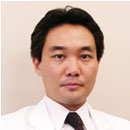
In the previous essay, I mentioned metabolic syndrome. If left untreated, it can lead to a lipid metabolism disorder resulting in fat accumulation in the liver. It may also cause fatty liver or diabetes. The fat secretes various hormones which injure the inside wall of the blood vessels (known as the endothelium). Under these conditions, a blood clot may form which can ultimately impede blood flow and block blood supply to part of the body or organs. This increases the risk of stroke or cardiac event. Overall, metabolic syndrome can advance and lead to a multitude of serious diseases if left untreated.
In reviewing the mortality statistics of Japan, one sees that thrombosis is a significant underlying factor for cause of death. A malignant neoplasm or cancer remains the most common cause of death at 310,000 deaths annually, followed by cardiovascular disorders at 160,000, and cerebrovascular diseases at 130,000. Among them, cardiovascular and cerebrovascular disorders include various forms of clinical conditions that are caused by thrombus (thrombosis), such as cardiac infarction and cerebral thrombosis. Surprisingly, they account for approximately 30% of total deaths. Thrombosis is a horrible and life-threatening disease that must be taken seriously.
I previously mentioned that damage to the endothelium of blood vessels may lead to thrombosis. Additionally, there are other factors which encourage a clot to form, such as poor circulation, increase of blood coagulability, or a change in blood composition. Specific risk factors for thrombosis include obesity, advanced age (over 40), dehydration, sedentary lifestyle, pregnancy, post-surgery, heart disease, cancer, or a genetic defect in blood clotting. When more than one of these factors are combined, the risk of thrombosis increases further because clots inhibit blood circulation and are detrimental to organs and tissues.
Oxygen is taken in through breathing and is then transported to the blood via the pulmonary arteries. Next, this oxygen-rich blood returns back to the heart and is then distributed throughout the body. If a clot forms in the pulmonary arteries and blocks blood flow, circulating blood won’t be adequately saturated with oxygen from the lungs. This condition is the equivalent to suffocation, resulting in a critical condition known as pulmonary artery thromboembolism. It causes sudden respiratory distress or chest pain in many cases, and cardiopulmonary dysfunction, sometimes in sudden death. Because medical treatment is rarely given in this situation, the emphasis needs to be on prevention.
There are various unavoidable factors which can cause thrombosis, but some, such as obesity and long-term bed rest, are avoidable merely by being proactive about living a healthy lifestyle. Lastly, a healthy diet can help prevent a prolonged fatal illness or sudden death.

Masahito Hitosugi, M.D., Ph.D.
Professor, Department of Legal Medicine
Shiga University of Medical Science
Education:
Graduate School of Medicine, Jikei University, Tokyo, Japan, M.D., Ph.D. (Dr. of Medical Science), 2000.
Residency:
Kawasaki Municipal Hospital (Internal Medicine), Kanagawa, Japan, 1994-1996.
License and Certification:
License of Medical Doctor (No. 367818), Japan Ministry of Health, Labour and Welfare, 1994.
Authorized Dr. of Medical Autopsy (No. 7189), Japan Ministry of Health, Labour and Welfare, 1999.
Authorized Dr. of Forensic Medicine (No. 100), Japanese Society of Legal Medicine, 2002.
The 1st grade of the Examination of Proficiency in English for Medical Purposes (No. 3), The Japan Society for Medical English Education, 2008.
・No.2 What causes metabolic syndrome?
・No.1 Why has metabolic syndrome been drawing greater attention?
・No.6 Health foods to prevent thrombosis
・No.5 Natto, a preventive measure against thrombosis
・No.4 Improving eating habits to prevent thrombosis
・No.3 Have You Heard of Traveler’s Thrombosis?